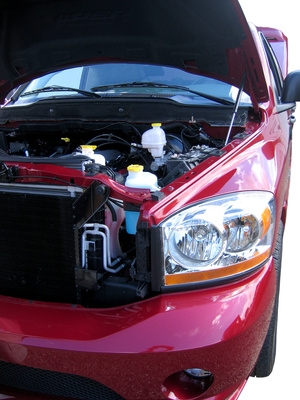
Replacing the master cylinder on a 2500 Dodge RAM Diesel is not a simple process, but if you assemble your tools and material before you start, and take your time, it should go smoothly. The most difficult part of this project will be the bleeding of the brakes, which is best done by two people, but it can also be successfully completed by one.
Locate the rear passenger side brake housing on the rear axle. Open the bleeder valve and place a bucket or pan under the vehicle to catch the brake fluid. Bleed the brakes by pumping the brake pedal repeatedly until all of the fluid has been drained from the system, into the pan. Do not pour the brake fluid on the ground. Instead, place it in a sealed container, such as a coffee can, for recycling or disposal.

Open the hood and find the master cylinder, located on the driver's side of the motor. Use the appropriate box end wrench to unscrew the brake lines from the master cylinder, being careful not to kink or damage the lines in the process. Disconnect any and all electrical connections to the master cylinder. Depending on the year, the number of electrical connections may vary. Tag the wires so that you will know where to reconnect them.

Use a ratchet to unbolt the master cylinder from the firewall of your truck. Next, use a box end wrench and ratchet of the correct sizes to unbolt the actuator arm that runs from the brake pedal to the master cylinder. This will free the master cylinder and allow it to be removed from the vehicle.

Remove the old cylinder and insert the new master cylinder. Reattach the new cylinder's actuator arm to the brake pedal. Reattach the master cylinder to the firewall. Reattach the brake lines and all the tagged electrical connections back into the plug-ins from which they were removed.
Refill the brake fluid tray to the top line with brake fluid, and with the rear passenger side bleeder valve open, pump the brake pedal until there is a stream of clean fluid flowing out of the bleeder and into the pan beneath the vehicle. Repeat this process with the other three brake bleeder valves. Place a large piece of cardboard or paper underneath the truck to complete the check for leaks in the master cylinder, as well as the individual brakes and brake lines. If there is still significant leakage, check the bleeder valves for tightness.